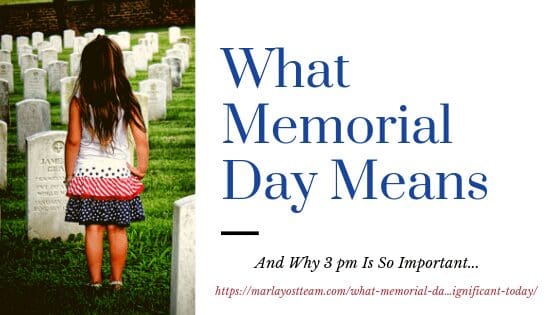Whenever we see a person dressed in a military uniform, or someone wearing a hat or other piece of clothing noting that they are a veteran we say, “Thank you for your service”. They deserve to hear it. They’ve sacrificed so much, after all, to protect our freedom. Memorial Day, however, is about those brave service men and women who paid the ultimate sacrifice. These heroes are the ones who gave their lives for their country, for our country. Today is the day put aside to remember them.
Memorial Day Starts with the Civil War
In 1868, then-Commander in Chief John A. Logan of the Grand Army of the Republic proclaimed May 30 to be Decoration Day. The holiday was celebrated by “decorating” the graves of fallen soldiers with flowers, flags, and more, hence the name “Decoration Day.”
When General Logan officially launched the holiday, he called for it to be observed on May 30. After the Uniform Monday Holiday Act took effect in 1971, however, it was moved to the final Monday in May. The date was selected because it wasn’t the anniversary of any battle in particular—well, according to legend, that is.
t is unclear where exactly this tradition originated; numerous different communities may have independently initiated the memorial gatherings. Nevertheless, in 1966 the federal government declared Waterloo, New York, the official birthplace of Memorial Day.
Waterloo—which first celebrated the day on May 5, 1866—was chosen because it hosted an annual, community-wide event, during which businesses closed and residents decorated the graves of soldiers with flowers and flags.
Decoration Day
On May 5, 1868, General John A. Logan, leader of an organization for Northern Civil War veterans, called for a nationwide day of remembrance later that month. “The 30th of May, 1868, is designated for the purpose of strewing with flowers, or otherwise decorating the graves of comrades who died in defense of their country during the late rebellion, and whose bodies now lie in almost every city, village and hamlet churchyard in the land,” he proclaimed.
The date of Decoration Day, as he called it, was chosen because it wasn’t the anniversary of any particular battle.
On the first Decoration Day, General James Garfield made a speech at Arlington National Cemetery, and 5,000 participants decorated the graves of the 20,000 Union and Confederate soldiers buried there.
Many Northern states held similar commemorative events and reprised the tradition in subsequent years; by 1890 each one had made Decoration Day an official state holiday. Southern states, on the other hand, continued to honor their dead on separate days until after World War I.
History of Memorial Day
Memorial Day, as Decoration Day gradually came to be known, originally honored only those lost while fighting in the Civil War. But during World War I the United States found itself embroiled in another major conflict, and the holiday evolved to commemorate American military personnel who died in all wars.
Memorial Day Traditions
Cities and towns across the United States host Memorial Day parades each year, often incorporating military personnel and members of veterans’ organizations. Some of the largest parades take place in Chicago, New York and Washington, D.C.
Americans also observe Memorial Day by visiting cemeteries and memorials. Some people wear a red poppy in remembrance of those fallen in war—a tradition that began with a World War I poem.

As of 2018, the United States Census Bureau reported Memorial Day honors more than one million men and women who have died in military service since the Civil War.
In December 2000, the National Moment of Remembrance Act was signed into law. It called for people to participate in a “symbolic act of unity” and pause at 3:00 p.m. local time on Memorial Day to remember the men and women “who died in pursuit of freedom and peace.”
Memorial Day 2019
Today, when you see a member of the military, your initial reaction may be to thank them for their service. They will probably thank you in return and then say, ‘today is not my day, that’s Veteran’s Day.” It’s okay. They appreciate your salute.
Instead, after thanking them for their service, you can add,
- “Enjoy your day, but I want you to know that I will be remembering what this holiday is about.”
- “Enjoy your day, and I will be thinking about those who are no longer with us.”
- “I will be taking a moment this today to honor those that served our nation and are no longer with us.”
- NPR suggests, “I hope you’re having a meaningful day.”
Enjoying Our Freedoms
We should take time out for the National Day of Remembrance. We can also honor these fallen heroes by immersing ourselves in the freedoms those who died in the line of duty made the ultimate sacrifice to protect.
Enjoy family, friends, and fun. Let everything you do today be a little brighter. Have dessert. Smell the roses. Say hello to a stranger at the checkout. Do something nice for someone else.
The best way we can keep their memory alive is by doing our part to make America the country they believed in.








0 Comments